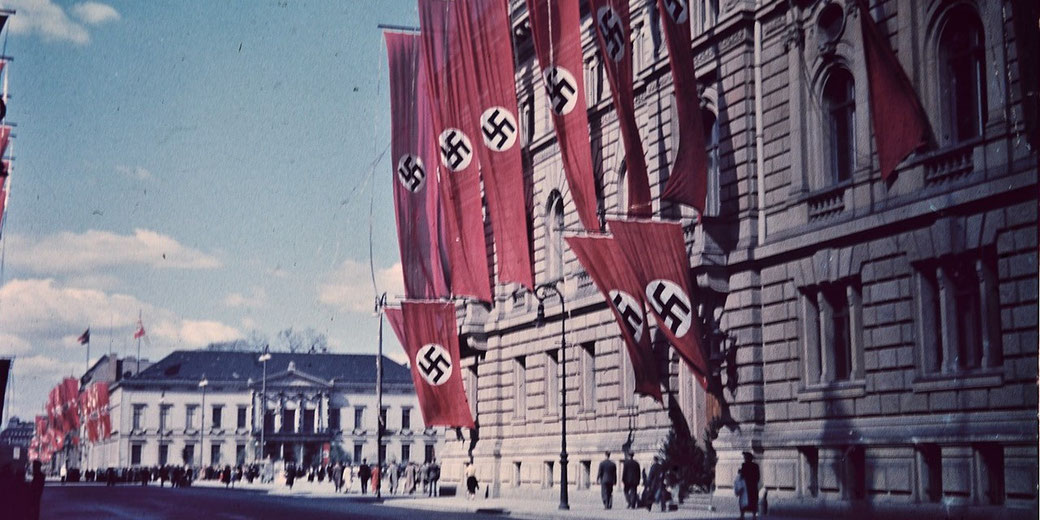What was the difference between the SS and the SA in Nazi Germany?

The history of the Nazi Party is a dark and disturbing chapter in human history, and the role played by its paramilitary organizations - the SA and the SS - is particularly chilling.
While many people are familiar with these two groups, there is often confusion about the differences between them. Were they essentially the same thing, or were there important distinctions that set them apart?
Here, we'll take a closer look at the SA and SS, examining their origins, functions, and power, and exploring the key differences that made them such influential - and ultimately destructive - forces in Nazi Germany.
The origins of both as paramilitary organisations
The Nazi Party, under the leadership of Adolf Hitler, utilized several paramilitary organizations to maintain order and enforce its will in Germany during the 1930s.
A paramilitary organization is a group that has a similar structure, training, tactics, and function to a professional military, but is not part of a country's official or legitimate armed forces.
Paramilitary organizations may carry out duties that the regular military or police cannot or will not handle, such as terrorism, security, or sabotage activities.
Two of the most well-known paramilitary organizations during the Nazi era were the Sturmabteilung (SA) and the Schutzstaffel (SS).
While both groups played important roles in the rise of the Nazi regime, they had distinct differences in terms of their origins, functions, and power.
Who were the SA?
The SA, also known as the Storm Troopers or Brownshirts, was established in 1921 by Ernst Röhm, a veteran of World War I and a key early supporter of Hitler.
The SA played a significant role in the early days of the Nazi Party, disrupting the meetings of rival political groups and intimidating opponents.
Its members, many of whom were former soldiers, were fiercely loyal to their leader Ernst Röhm and helped to create a sense of unity and purpose within the party.
However, it soon expanded its activities to include street fighting and intimidation of opponents, and it grew rapidly in size, reaching over three million members by the mid-1930s.
Who were the SS?
The SS, on the other hand, was established in 1925 as a smaller, elite organization tasked with providing personal protection for Hitler and other top Nazi leaders.
The SA played a significant role in the early days of the Nazi Party, disrupting the meetings of rival political groups and intimidating opponents.
Its members, many of whom were former soldiers, were fiercely loyal to their leader Ernst Röhm and helped to create a sense of unity and purpose within the party.
Its first leader was Heinrich Himmler, who was appointed by Hitler in 1929. The SS initially had only about 240 members, but it grew rapidly over the next few years and eventually became a powerful force in its own right.
The key differences
One of the key differences between the SA and the SS was their respective roles within the Nazi Party.
While the SA was primarily focused on maintaining order and enforcing the will of the party, the SS had broader responsibilities that included intelligence gathering, running concentration camps, and overseeing the implementation of the Final Solution (the systematic extermination of Jews and other groups deemed undesirable by the Nazis).
Another important difference between the two organizations was their relationship with Hitler himself.
While the SA had been instrumental in helping Hitler to rise to power, it also posed a potential threat to his authority. Röhm, the SA's leader, was seen as a potential rival to Hitler, and there were fears that he might try to stage a coup or otherwise challenge the Führer's authority.
In 1934, Hitler ordered the so-called "Night of the Long Knives," during which the SA leadership was purged and many of its members were executed.
The SS, on the other hand, remained loyal to Hitler throughout his reign and played a key role in carrying out his orders.
In terms of their uniforms and insignia, the SA and SS also had distinct differences. The SA wore brown shirts, while the SS wore black uniforms.
The SS also had a distinctive symbol, the double lightning bolt or "sig" rune, which was used on its uniforms and insignia.
Both were part of the Nazi system
Despite their differences, both the SA and SS played important roles in the rise and consolidation of Nazi power in Germany.
However, the brutal tactics and extremist ideology of these organizations ultimately contributed to the downfall of the Nazi regime and the defeat of Germany in World War II.
What do you need help with?
Download ready-to-use digital learning resources
Copyright © History Skills 2014-2025.
Contact via email
With the exception of links to external sites, some historical sources and extracts from specific publications, all content on this website is copyrighted by History Skills. This content may not be copied, republished or redistributed without written permission from the website creator. Please use the Contact page to obtain relevant permission.





